
Migraine headaches can result in excruciating pain, nausea, and sensitivity to light and sound. They are a terrible and occasionally disabling disorder. Whilst there are many various migraine treatments available, one relatively new and promising method is the administration of Botox injections.
The neurotoxin known as Botox is made by the bacterium Clostridium botulinum. It functions by preventing the release of acetylcholine, a neurotransmitter involved in signal transmission between nerve cells. Botox can help to relax the muscles in the face, neck, and head and stop them from contracting too much, which can lessen the frequency and intensity of migraine attacks.
A series of injections into various sites around the head and neck are commonly used as part of the Botox injection technique for migraine therapy. Depending on the patient's symptoms and the intensity of their migraines, the precise number and placement of injections will change.
The skin is washed prior to the treatment, and a topical anesthetic lotion may be used to assist numb the area. A tiny needle is then used to inject the Botox into the desired muscles. Patients can continue their regular activities right away following the operation, which normally lasts about 15 minutes.
Typical injection locations for Botox injections used to treat migraines are found in particular head, neck, and shoulder muscles. Depending on the person's symptoms and the intensity of their migraines, the precise injection locations may vary, however they typically include:
Frontalis muscle: The frontalis muscle, which is found in the forehead, is in charge of elevating the brows. By easing tension and pressure in the forehead, Botox injections into this muscle can help to avoid migraines.
Temporalis muscle: The temporalis muscle, which is on the side of the head, lies in charge of chewing. By reducing tension and pressure in this muscle, Botox injections can help treat or even prevent migraines.
Occipitalis muscle: The head tilt is caused by the occipitalis muscle, which is situated near the base of the skull. By reducing pressure and muscle tension in this area of the head, Botox injections into this muscle can aid in migraine prevention.
Trapezius muscle: The neck's cervical paraspinal muscle, which runs parallel to the spine, is in charge of supporting the head and neck. Injecting Botox into this muscle can assist to lessen neck pressure and stress, which can help to ward off migraines.
The shoulders can be raised and the head can be tilted to one side thanks to the trapezius muscle, which is found in the neck and shoulders. By easing stress and strain in the neck and shoulders, Botox injections into this muscle can aid in migraine prevention.
Cervical paraspinal muscle: Healthcare professionals want to relax the muscles and lessen muscle tension and pressure, which can cause migraines, by injecting Botox into these particular muscles. Depending on how the patient reacts to treatment and how their symptoms develop, the injection locations may need to be changed or new spots added. The best injection places for your unique symptoms and medical background should be determined in consultation with a medical expert.
Patients who suffer from chronic migraines-defined as having at least 15 headache days per month, with at least 8 of those days being migraines—are often recommended for Botox injections as a migraine treatment. Patients who have less than 15 headache days per month or who have previously experienced allergic reactions to Botox or other treatments containing botulinum toxin are normally not advised to get Botox.
Uncertainty surrounds the precise processes by which Botox injections lessen the frequency and intensity of migraines. Yet, it's thought that the injections relieve muscle tension and prevent the release of some neurotransmitters linked to pain.
According to theory, Botox injections function by preventing the release of acetylcholine, a neurotransmitter that is in charge of transmitting impulses between nerve cells. By inhibiting acetylcholine release, Botox can relax tension in the muscles of the neck and head and stop them from tightening too much. This can lessen the frequency and intensity of migraines.
The production of several neurotransmitters linked to pain, such as substance P and calcitonin gene-related peptide, is thought to be blocked by botox injections (CGRP). Botox can help lessen pain and inflammation in the head and neck by preventing the release of these neurotransmitters.
Depending on the patient's symptoms and the intensity of their migraines, different people respond differently to Botox injections for treating migraines. Studies have revealed, however, that Botox injections can be a successful therapy choice for many people who suffer from persistent migraines.
“According to a study that was published in the Journal of the American Medical Association, Botox injections considerably reduced the frequency of migraines compared to placebo injections.”
According to the study, patients who received Botox injections had 8.4 fewer headache days on average each month as opposed to 6.2 fewer headache days in the placebo group. Another study indicated that Botox injections could lessen migraine frequency, duration, and severity. This study was published in the journal Cephalalgia. According to the study, patients who received Botox injections had a significant decrease in their migraine frequency and intensity, as well as in the number of attacks they experienced each month.
There are negative effects from Botox injections used to treat migraines. These negative effects, though, are typically minor and transient.
The following are the most frequent negative effects of Botox injections for migraine treatment:
Less frequent negative effects could be:
After obtaining Botox injections, it's crucial to seek medical assistance right away if you develop any of these side effects.
A potential new strategy for treating chronic migraines is the use of Botox injections. Botox injections assist individuals with migraines live better lives by easing muscular tension and preventing the release of specific neurotransmitters, which in turn helps to lessen the frequency and severity of migraines.
Botox injections are typically safe and well-tolerated, but it's vital to speak with a doctor to see if it's the appropriate procedure for you. Your doctor can give you with more information about the possible dangers and advantages of this treatment, as well as help you decide if Botox injections are a good option for your particular symptoms and medical history.
By relaxing the muscles in the head, neck, and shoulders that can cause or aggravate migraines, Botox works to treat them. Botox is believed to limit the release of some neurotransmitters, such as acetylcholine, which are involved in muscular contraction and pain signals. The precise mechanism of action is still unknown.
Botox may have a direct analgesic (pain-relieving) impact in addition to its muscle-relaxing effects. According to studies, Botox can lessen nerve ending sensitivity and stop pain signals from reaching the brain.
The injection sites for Botox for migraine treatment are often found in particular muscles, such as the forehead, temples, and neck, that are linked to migraine discomfort and symptoms. Healthcare professionals try to lessen muscle tension and pressure, which can cause migraines, by injecting Botox into these muscles.
It's crucial to understand that Botox is not a migraine cure and that not everyone will experience success with it. Nonetheless, it has been demonstrated to be useful in some people, particularly those with chronic migraines who have not reacted well to previous therapies, in lowering the frequency and intensity of migraines.
If you have specific migraine symptoms and a medical history, a trained healthcare expert can help you assess whether Botox is an appropriate therapeutic option.
Indeed, the FDA has authorized Botox (onabotulinumtoxinA) for the treatment of adult patients with chronic migraines. In order to be diagnosed with chronic migraines, a person must experience at least 15 headache days each month, at least 8 of which must also be accompanied by migraine symptoms including nausea, sensitivity to light or sound, or visual abnormalities.
Following many clinical trials that showed its safety and effectiveness in lowering the frequency and intensity of migraines, the FDA approved Botox for the treatment of migraines in 2010. Since then, millions of injections of Botox have been performed annually as a recognized therapy option for severe migraines.
It's vital to remember that Botox cannot be used to treat headaches or migraines that do not adhere to the standards for chronic migraines. Healthcare professionals must adhere to the proper dosing and administration standards and only use Botox for conditions that have been approved by the FDA.
Although the degree of success can vary based on individual characteristics like the intensity and frequency of migraines, Botox has been demonstrated to be helpful for the treatment of chronic migraines in adults.
Contrary to placebo injections, Botox was found in clinical trials to lower the number of headache days experienced each month by an average of 8–9 days. According to certain research, headache frequency was reduced even more, and up to 50% of patients saw a considerable improvement in their symptoms.
It's crucial to remember that not everyone will notice a significant reduction in their migraine symptoms after receiving Botox. The dose and method of injection, as well as the patient's medical history and response to prior therapies, may all affect how well Botox works to treat migraines.
Overall, adults with persistent migraines who have not reacted well to conventional treatments are thought to benefit from Botox as a safe and efficient therapy choice. Before choosing a course of treatment, it's crucial to go over the potential dangers and advantages of Botox with a licensed healthcare professional.
Although the length of the impact can vary based on individual factors such as the intensity and frequency of migraines, the amount and injection technique used, and the individual's response to the treatment, the effects of Botox treatment for migraines can continue for up to three months.
To preserve the benefits of the therapy, the majority of medical professionals advise getting another round of Botox injections every 12 weeks. However, some people might need to get shots more frequently, while others might be able to wait longer between shots.
It's vital to remember that Botox therapy for migraines may not have immediate results, and it may take a few weeks before headache frequency and intensity noticeably decrease. The effects of Botox may also fade with time, and some people may notice a return of their migraine symptoms prior to their next appointment for an injection.
Overall, the length of Botox therapy for migraines might vary based on personal characteristics, thus medical professionals should regularly monitor their patients to choose the best course of action.
Several individual factors, including the intensity and frequency of migraines, the dose and injection technique utilized, and the patient's response to the treatment, might affect how frequently Botox injections are administered to treat migraines.
To preserve the benefits of the procedure, the majority of medical professionals advise Botox injections every 12 weeks (or three months). Based on the FDA-approved dosing schedule for persistent migraines, which calls for 31 injections to be given at predetermined locations all over the head and neck, this is.
However, some people might need to get injections more frequently, especially if their migraine symptoms return suddenly before the 12-week milestone. In certain situations, medical professionals could advise scheduling injections more frequently, such every 10 or even every 8 weeks.
It is crucial to remember that the ideal number of Botox injections to provide for treating migraines might change depending on a number of factors, so medical professionals should regularly monitor their patients to come up with the best course of action. Also, it's crucial to adhere to the suggested dosing schedule and avoid going above the maximum dose because doing so can raise the chance of side effects.
No, only chronic migraines—defined as those with at least 15 headache days per month and at least 8 of those headache days accompanied by migraine symptoms like nausea, sensitivity to light or sound, or vision disturbances—can be treated with Botox.
Some types of headaches or migraines that do not fit the definition of a chronic migraine cannot be treated with Botox. However, not everyone with chronic migraines may benefit from Botox, and some people may not notice a noticeable improvement in their migraine symptoms.
Before choosing a course of treatment, it is crucial to consider the potential dangers and advantages of Botox with a licensed healthcare professional. To assess whether Botox is a suitable option for a patient's particular form of migraines, healthcare professionals should also consider the patient's medical history and response to prior therapies.
The frequency and intensity of your migraine symptoms, the sort of migraines you suffer, and your response to other migraine therapies will all determine if Botox is the correct treatment for you.
Your healthcare practitioner will normally review your medical history, conduct a physical examination, inquire about your migraine symptoms, and ask about any previous treatments you've had to see if Botox would be a good fit for your migraines.
Botox may be an option to take into account if you have been diagnosed with persistent migraines and have not found significant relief from other migraine treatments, such as drugs or lifestyle changes. Further details on the advantages and drawbacks of Botox injections, as well as other possible treatments for your particular type of migraines, can be obtained from your healthcare provider.
It is significant to remember that Botox is not a migraine cure and may not be effective for many people. Botox may not significantly reduce migraine symptoms for everyone, and some people may develop issues or adverse effects. Consequently, before choosing a course of treatment, it is crucial to go over the potential dangers and advantages of Botox with a licensed healthcare professional.
Botox injections for the treatment of migraines may cause negative effects, just like any other medical procedure. The following are the most frequent negative effects associated with Botox treatment for migraines:
After a few days to weeks following the injection, the majority of these side effects are minor and go away on their own. Nonetheless, it's crucial to get in touch with your doctor if you encounter any of these symptoms.
Rarely, more serious side effects from Botox injections for migraine treatment can include trouble swallowing, shortness of breath, or a strong allergic response. Any of these symptoms should prompt you to seek immediate medical assistance.
Before choosing a course of treatment, it is crucial to consider the potential dangers and advantages of Botox with a licensed healthcare professional. Your doctor can assist you in weighing the potential advantages and disadvantages of Botox as well as talk to you about other treatment choices if Botox is not right for you.
Depending on your individual health plan and coverage, Botox injections for the treatment of migraines might be reimbursed by insurance.
“The use of Botox for the treatment of chronic migraines is permitted by the FDA if the patient experiences at least 15 headache days per month, at least 8 of which are accompanied by migraine-related symptoms such nausea, sensitivity to light or sound, or vision abnormalities.”
If the patient meets certain requirements, such as having a history of severe migraines that have not responded to prior therapies, some insurance companies may pay Botox injections for migraine treatment. It is crucial to get in touch with your insurance provider to find out if Botox injections for migraine therapy are covered because coverage may differ based on the insurance plan and policy.
It is crucial to remember that there can be out-of-pocket expenses, including deductibles or copays, even if insurance covers Botox injections for migraine therapy. If money is a problem, your healthcare professional can explore other treatment choices and assist you in understanding the potential costs involved with Botox therapy.
Many variables, such as the place of administration, the quantity of injection sites, and the healthcare professional doing the process, might affect the cost of Botox injections for the treatment of migraines.
Injections of Botox are normally priced per unit, with the total price dependent on how many units are required to treat a certain location. Depending on the number of injection sites and the intensity of the migraines, a different number of units may be needed.
An typical session of Botox injections for migraine therapy costs between $550 and $1,200, according to RealSelf, a website that offers information on cosmetic procedures. Most people need two to three sessions per year. It is crucial to remember that these charges can differ significantly depending on the precise location and medical professional doing the surgery.
It's also crucial to be aware that, depending on the person's insurance plan and coverage, the cost of Botox injections for migraine therapy may not be reimbursed by insurance or may only be partially covered. It is crucial to speak with your doctor and insurance company to learn about the potential expenses of Botox treatment. If cost is an issue, you should also look into other treatment choices.
A qualified healthcare expert, such as a neurologist, headache specialist, or plastic surgeon, administers Botox injections as a migraine treatment. A little needle is used to administer the injections, which usually only take a few minutes to finish.
The medical professional will choose the precise injection locations in accordance with the patient's symptoms and medical background. Often, tension headaches and migraines are treated with Botox injections into specific muscles in the forehead, temples, neck, and shoulders.
Depending on the patient's symptoms and treatment outcome, different numbers of injection locations and doses of Botox may be used. An average therapy session includes 31 to 39 shots for each patient.
In general, Botox injections are well tolerated and come with no recovery period. Although it is advised to avoid vigorous exercise or lying down for at least four hours following the injections, people can resume their regular activities right away.
To stop the spread of Botox to other regions, it's crucial to adhere to the doctor's post-injection recommendations, which may include not touching the injection sites or rubbing the treated area. Most people require repeated treatments for best results, and it may take several days to weeks before the full effects of Botox injections for migraine treatment are apparent.
Depending on the individual, Botox injections for migraine treatment may cause varying degrees of pain. While some people could feel pain during the injection, others might not feel anything at all.
Most people don't experience any discomfort during the actual injection because it normally only takes a few seconds and only uses a little needle. Yet some people can feel a little soreness or a little stinging where the injection was made.
Before giving the injections, medical professionals may numb the skin with ice or a topical numbing medication to lessen any pain. To further lessen pain and swelling, some medical professionals may use a smaller needle or apply pressure to the injection site right afterwards.
Before the treatment, it's crucial to share any worries you have about pain or discomfort with your healthcare professional to make sure the right steps are taken to reduce discomfort. Overall, Botox injections for the treatment of migraines are well tolerated, and the majority of patients only feel minor pain or discomfort while having the operation done.
Yes, you can usually get back to your regular routine right away after getting Botox injections for migraine relief. Unlike to certain surgical procedures, Botox injections don't require any recovery time, and the majority of people can resume their normal activities right away.
To stop the spread of Botox to other places, it is advised to avoid lying down or doing any strenuous physical activity for at least four hours following the injections. Also, it's crucial to avoid rubbing or massaging the treated area because doing so could transfer the Botox to other muscles and result in unintended side effects.
You might wish to apply ice or a cold compress to the injection site for a short while if you experience any pain or swelling there. Yet, the majority of patients who receive Botox injections for migraine treatment do not experience any serious side effects and can immediately return to their regular activities.
To get the greatest possible outcome from your treatment, it is crucial to abide by any specific recommendations given by your healthcare professional following the surgery, such as refraining from taking particular medications or engaging in certain activities.
Depending on the individual, Botox for migraine therapy may take a while to take effect. Some patients may find significant alleviation from their symptoms within a few days of the injections, whilst others might not feel much relief until many weeks later.
“The full effects of Botox for the treatment of migraines typically take up to two weeks following the injections. Nonetheless, following the first therapy session, some people could continue to experience symptom alleviation for several months.”
It is crucial to remember that Botox injections for migraine treatment are not a quick fix and that the majority of patients need many treatment sessions to get the greatest results. Botox treatments normally take place at least 12 weeks apart since the effects remain for around 12 weeks.
It is crucial to speak with your healthcare practitioner to decide the best course of action for your unique circumstance if you have questions about the time frame for witnessing the effects of Botox for migraine therapy or have not noticed a significant reduction in your symptoms after many weeks.
Depending on the individual, Botox for migraine therapy may take a while to take effect. Some patients may find significant alleviation from their symptoms within a few days of the injections, whilst others might not feel much relief until many weeks later.
The full effects of Botox for the treatment of migraines typically take up to two weeks following the injections. Nonetheless, following the first therapy session, some people could continue to experience symptom alleviation for several months.
It is crucial to remember that Botox injections for migraine treatment are not a quick fix and that the majority of patients need many treatment sessions to get the greatest results. Botox treatments normally take place at least 12 weeks apart since the effects remain for around 12 weeks.
It is crucial to speak with your healthcare practitioner to decide the best course of action for your unique circumstance if you have questions about the time frame for witnessing the effects of Botox for migraine therapy or have not noticed a significant reduction in your symptoms after many weeks.
Yes, you can typically mix Botox for migraine treatment with other migraine drugs. In fact, many patients who receive Botox injections for migraines already take triptans, anticonvulsants, and beta-blockers to treat their symptoms.
When receiving Botox for migraines, it's crucial to discuss any medications you're currently taking with your doctor. In addition to advising you on whether it is safe to continue taking your present medications in addition to Botox injections, your healthcare practitioner may also change your prescription schedule as necessary.
To lower the chance of side effects or interactions, your doctor may occasionally advise stopping the use of specific medications before and after your Botox injections. To guarantee the safest and most efficient course of treatment, it's crucial to carefully adhere to all of your healthcare provider's directions.
Botox injections for the treatment of migraines have some risk, just like any medical operation. Although though these hazards are typically minimal, it's crucial to be aware of them before receiving therapy.
The following are some potential hazards of using Botox to treat migraines:
Before having the operation, it is crucial to talk over the potential dangers and advantages of Botox for the treatment of migraines with your healthcare professional. Your medical professional can offer advice on how to reduce your risk of issues and ensure the safest and most efficient course of treatment.
Certainly, there are some situations in which Botox injections are not appropriate for treating migraines. A treatment may be harmful or inappropriate for a person due to contraindications, which are factors or conditions.
Contraindications for Botox for migraine treatment include:
“Botox injections have not been proven to be safe for use in pregnant or nursing women, thus this treatment is typically not advised for anyone who are in either of these situations. The effects of Botox on growing fetuses or newborns have received little studied, and it is unclear if Botox can enter breast milk.”
So, before considering Botox injections as a migraine treatment, it is crucial to discuss any pregnant or breastfeeding issues with your healthcare professional. Your healthcare professional can help you evaluate the potential advantages and disadvantages of this course of therapy and determine whether it is the best option for you. Botox injections are generally advised to be avoided by women who are expecting or nursing unless the advantages clearly exceed the hazards.
Although individual outcomes may vary, the benefits of Botox for migraine treatment might persist up to 3–4 months. In order to preserve the therapeutic effects of the procedure, patients could require Botox injections every three to four months.
The length of time that Botox will last depends on a number of variables, including the person's metabolism, the severity of their migraines, and the dosage of Botox used. Also, with time, the effectiveness of Botox may gradually decline in certain people.
Before getting Botox injections for migraine therapy, it is advised that patients talk to their doctor about their unique treatment objectives and expectations. To maximize the advantages of this treatment, your healthcare professional can assist in determining the right dosage and frequency of treatments.
The effectiveness and safety of Botox, one of many medications for migraine control, may vary from patient to patient. These are some contrasts between several migraine remedies:
Botox injections for migraine treatment may be superior to various other methods in a number of ways. Instead than only treating symptoms as they appear, Botox can stop migraines before they start. In addition, Botox injections can be given quickly and painlessly, and they have a limited number of negative effects. The benefits of Botox may differ from patient to patient and may not be helpful for all patients.
For more than 20 years, migraines have been treated using Botox. Early in the 1990s, medical professionals observed that patients who had Botox injections for facial spasms also experienced less frequent and severe migraines. Further investigation into the use of Botox as a migraine medication is the result of this observation.
The US Food and Drug Administration (FDA) approved Botox's usage to treat chronic migraines in 2010. A chronic migraine is characterized by 15 or more headache days per month, at least 8 of which must be migraine days. At that time, Botox has gained widespread acceptance as a viable therapy option for persistent migraines. Off-label use of the drug has also been reported for the management of other forms of migraines.
When administered by a licensed healthcare expert, Botox for migraine treatment is generally regarded as safe. Botox is an FDA-approved treatment for chronic migraines and has been used for many years for both medical and cosmetic purposes.
Botox for migraine treatment carries some potential dangers and adverse effects, just like any medical procedure. Symptoms include transitory muscle weakening, bruising, and mild to moderate pain or discomfort at the injection site. Though uncommon, more severe side effects such trouble breathing, eating, or speaking can happen. Before receiving Botox treatment, it's crucial to talk over any worries or inquiries with your doctor.
It's also crucial to remember that not everyone is a good candidate for Botox. Botox injections shouldn't be given to people with neurological disorders, allergies to the drug or any of its components, pregnancies, or breastfeeding. Before receiving Botox treatment, it's crucial to discuss your whole medical history and any drugs you're taking with your healthcare professional.
There is no proof that using Botox to treat migraines carries any long-term dangers. Since it has been used for more than 20 years for both medical and cosmetic reasons, substantial study has been done to determine both the safety and efficacy of Botox.
But, Botox injections can have negative effects, some of which may be long-lasting, just like any medical operation. Temporary muscle weakness and issues speaking, swallowing, or breathing are some of these side effects. Rarely, more severe consequences including muscle or nerve damage can result from the poison spreading past the injection site.
It is crucial to understand that Botox for migraine treatment does not provide a permanent fix for migraines. The therapeutic effect must be maintained with frequent injections. As a result, it's crucial to clarify any worries or inquiries with your doctor before receiving Botox treatment and to adhere to their recommendations for aftercare.
There are a few things you may do to get ready for Botox injections if you've chosen to have them as a migraine treatment:
To get the best results from your Botox injections, it's crucial to adhere to your doctor's recommendations both before and after the procedure.
Indeed, after receiving Botox injections for the treatment of migraines, you should follow some post-injection care instructions:
In order to achieve the best outcomes and reduce any possible hazards or side effects, it's crucial to carefully adhere to these directions.
After receiving Botox injections for migraine relief, the majority of patients can return to their regular activities right after with little to no downtime. However, a few days may pass before the discomfort, swelling, or bruising at the injection site goes away in some people.
You may need to be patient and wait for the full advantages to take effect as, generally, the effects of Botox injections for migraine treatment may take several days to a few weeks to become apparent. The length of the effects can vary depending on the person and other factors, so it's crucial to keep in mind that you may need to schedule frequent follow-up consultations to sustain the outcomes over time.
You should call your doctor right away if you develop any odd signs or side effects after receiving Botox injections for the treatment of migraines, such as excruciating pain or swelling, a fever, or trouble breathing.
For the treatment of migraines, numerous Botox injection locations are often distributed around the forehead, temples, back of the head, neck, and shoulders. Depending on the patient and their particular migraine symptoms, different individuals may require a different number and location of injection locations.
A competent healthcare expert will normally administer a series of 31 to 39 tiny injections of Botox for the treatment of migraines in a single session. The injection locations are specifically targeted to target particular muscle groups, such as the muscles of the forehead, temples, and jaw, which are thought to contribute to migraine headaches.
The Botox solution will normally be injected directly into the desired muscle groups by the medical practitioner doing the injections using a small needle. Most people can continue their regular activities right away after the injection session, which often lasts less than 30 minutes in total.
“Botox can be used to treat tension headaches in addition to other types of headaches, such as chronic migraines for which it is most commonly prescribed.”
The most normal sort of headache is a tension headache, which is characterized by a dull, agonizing pain that commonly affects the forehead, temples, and/or the back of the head and neck. These headaches are frequently brought on by stiffness and tension in the neck and head muscles, which can be made worse by stress, anxiety, and bad posture.
Botox helps to lessen tension headache frequency and severity by inhibiting the release of several neurotransmitters that are involved in pain signaling. Botox is often injected into the muscles of the forehead, temples, back of the head, and neck when used to alleviate tension headaches.
Although Botox has been proved to be useful in reducing tension headaches, it is crucial to remember that this treatment does not provide a permanent solution. To assist address the underlying causes of tension headaches, further therapies, such as Botox injections, physical therapy, and medication, can be required.
There are a few measures you can take to locate a certified healthcare professional for Botox for migraine treatment:
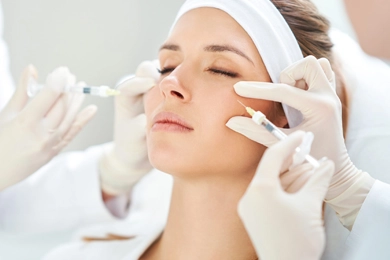 Unlocking the Secrets of Botox: A Comprehensive Guide
Unlocking the Secrets of Botox: A Comprehensive GuideA mainstay in the aesthetic treatment sector, Botox is a word that conjures up images of youth and beauty. Given its potent anti-aging properties and capacity to smooth wrinkles, it is understandable why mil Read More...
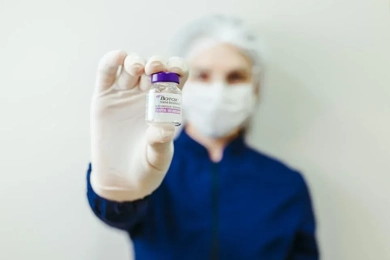 Botox: The Magic Medicine for Everything
Botox: The Magic Medicine for EverythingBotox, or Botulinum toxin as it is known scientifically, has long been associated with aesthetic surgeries meant to minimize wrinkles and fine lines. Read More...
 12 Unexpected Botox Benefits You Won't Believe
12 Unexpected Botox Benefits You Won't BelieveBotox, a word frequently associated with the realm of cosmetic beauty, conceals a slew of unexpected benefits beneath its surface that go beyond its conventional use. Read More...
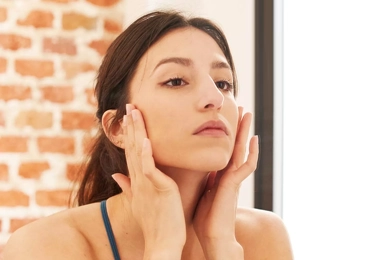 Botox Didn't Work; What Is the Reason for This? What Should I Do?
Botox Didn't Work; What Is the Reason for This? What Should I Do?Botox adverse effects may be attributed to a multitude of factors, including the practitioner's skill, the product's quality, or the physical attributes of the recipient. Read More...
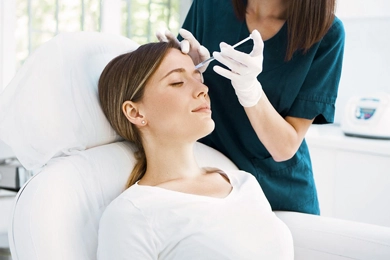 A Beginner's Guide to Botox: What to Expect and How to Prepare
A Beginner's Guide to Botox: What to Expect and How to PrepareThis comprehensive guide will outline the following: considerations to bear in mind, anticipations during and following a Botox treatment, and pre-treatment precautions. Read More...
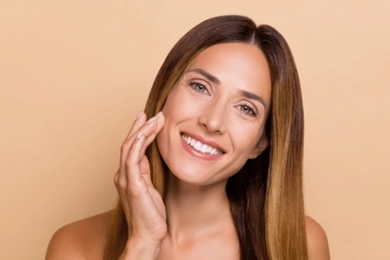 50 Things You Need to Know About Botox
50 Things You Need to Know About BotoxBotulinum toxin, which is created by the bacterium Clostridium botulinum, is the source of the drug known as Botox. Although it has a reputation for being able to minimize facial wrinkles, its roots are in m Read More...
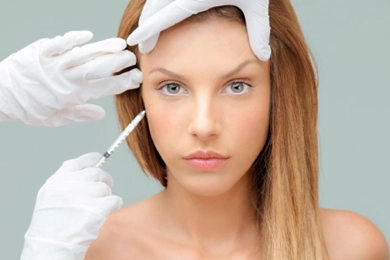 Does Resistance Develop to Botox?
Does Resistance Develop to Botox?Botox, a common non-surgical cosmetic procedure, has changed everything for many people who want to get rid of wrinkles and fine lines. Although the effects are frequently successful, some individuals report Read More...
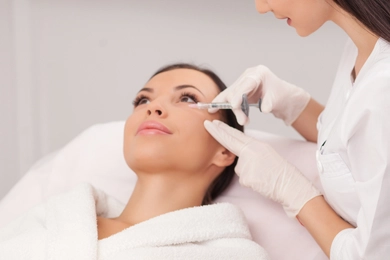 When Does the Effect of Botox Begin and How Long Does It Last?
When Does the Effect of Botox Begin and How Long Does It Last?Botox has grown to be one of the most popular cosmetic procedures in the globe due to its effectiveness in smoothing out wrinkles and fine lines. Potential patients frequently inquire about the beginning and Read More...
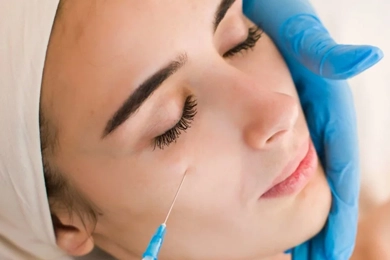 3 Zone Botox
3 Zone BotoxBotox continues to lead non-surgical aesthetic therapies in the large and ever-evolving field of cosmetic treatments. While the fundamentals of Botox are generally understood by most individuals, the idea of Read More...
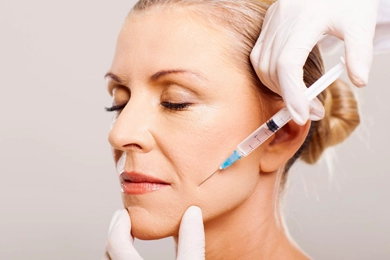 Post-Botox Care: The Do's and Don'ts for Optimal Results
Post-Botox Care: The Do's and Don'ts for Optimal ResultsWith millions of procedures conducted each year, Botox has solidified its position as a top non-surgical aesthetic treatment. Many people appreciate it due to its capacity to lessen wrinkles and give a more Read More...
 How Frequently Should I Get Botox?
How Frequently Should I Get Botox?Botox has become a buzzword in the aesthetic industry, renowned for its ability to smooth wrinkles and rejuvenate the complexion. However, a common conundrum that many encounter is determining the optimal fr Read More...
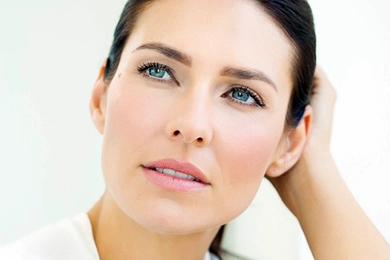 Botox vs. Filler
Botox vs. FillerBotox and dermal fillers stand out as two of the most popular and successful procedures in the cosmetic business for restoring a young appearance. Read More...
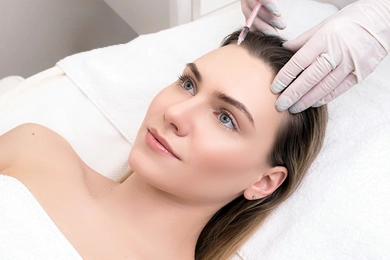 Preventative Botox
Preventative BotoxPreventative Botox stands out as a bright prospect for many in a time when the quest for perpetual youth has gained considerable traction. This cutting-edge technique is becoming more and more well-liked as Read More...
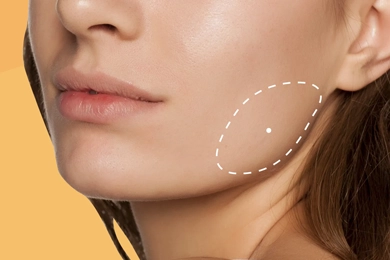 A Comprehensive Look at Botulinum Toxin
A Comprehensive Look at Botulinum ToxinBruxism is the medical term for teeth grinding or clenching, a common condition that many people experience at some point in their lives. Read More...
 I Have Had Botox Done, But I Am Not Satisfied
I Have Had Botox Done, But I Am Not SatisfiedThe outcomes of Botox, however, can vary from person to person as with any medical procedure, and occasionally, patients may not be entirely satisfied with the results. Here is what you should do if you find Read More...
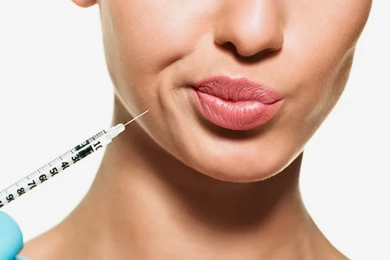 Can The Effects of Botox Be Undone?
Can The Effects of Botox Be Undone?The neurotoxin known as Botox, also known as botulinum toxin type A, has become extremely popular in cosmetic dermatology due to its capacity to minimize the appearance of fine lines and wrinkles. Read More...
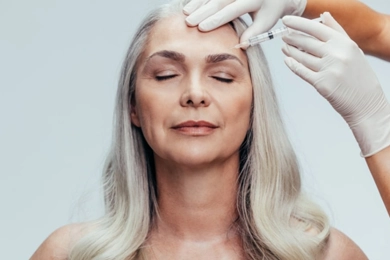 Can I Exercise After Botox?
Can I Exercise After Botox?In this article, we will examine the effects of exercise on Botox and offer some guidelines for exercising safely after receiving the popular cosmetic procedure. Read More...
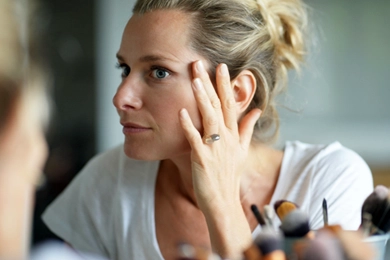 What Happens If I Stop Getting Botox Injections?
What Happens If I Stop Getting Botox Injections?For many years, people have used Botox, a common cosmetic procedure, to lessen the appearance of wrinkles and fine lines. It functions by obstructing the signals that travel from the nerves to the muscles, w Read More...
 Botox Aftercare: Things you Should Avoid After Botox Treatment
Botox Aftercare: Things you Should Avoid After Botox TreatmentWhile Botox is a relatively safe procedure, it is important to follow proper aftercare instructions to ensure the best results. In this blog post, we will discuss things you should avoid after Botox treatmen Read More...
 How to Make Botox Last Longer
How to Make Botox Last LongerHow to Make Botox Last Longer It functions by preventing the signals that tell muscles to contract, which helps the skin become smoother. While Botox's effects are transient, there are strategies to extend i Read More...
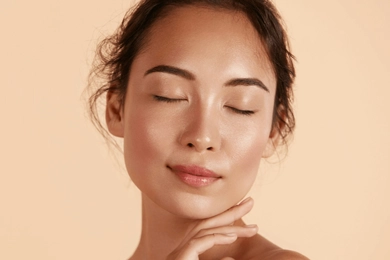 How Long Does Botox Last?
How Long Does Botox Last?A common cosmetic procedure that aims to lessen the appearance of wrinkles and fine lines is botox. It is frequently applied on frown lines, crow's feet, and forehead lines. But one concern that many people Read More...
 How Long Does Botox Take To Work, Timeline And More
How Long Does Botox Take To Work, Timeline And MoreBotox is a well-known cosmetic procedure that helps to hide facial wrinkles and fine lines. Yet when considering Botox, one of the most frequently asked queries is how long it takes to start working. We will Read More...
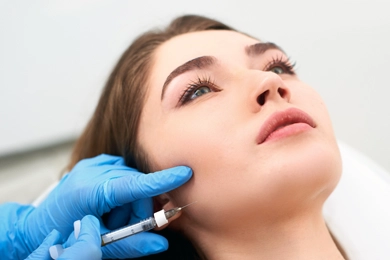 When Will You See Results After Masseter Botox?
When Will You See Results After Masseter Botox?There are several therapy options for bruxism, or the unintentional grinding or clenching of teeth. Injections of masseter Botox are one of the most well-liked and successful therapies. Read More...